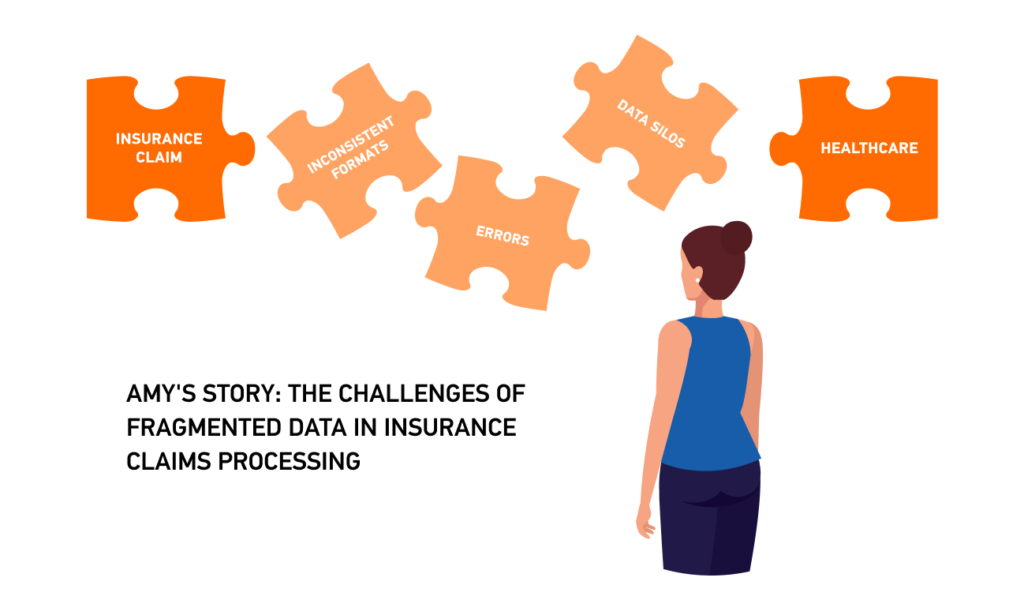In healthcare, errors in data recording threaten the quality of care and may lead to unnecessary spending. For example, healthcare insurance claim errors skyrocket healthcare costs. According to CMS.gov, in 2023, the Medicare Fee-for-Service (FFS) program estimated an improper payment rate of 7.38%, resulting in $31.23 billion worth of improper payments.
Hence, ensuring swift and accurate information handling is crucial for seamless patient care and efficient use of funds. In the webinar on Data Quality in Healthcare for HL7 International, Edenlab’s FHIR experts unveiled the intricacies of clinical data validation in healthcare and shared some real-world examples that prove the importance of data validation for quality and effective healthcare.

Amy, a supply chain manager in a global network of cafes, found herself in the unexpected need of a medical emergency in Oklahoma. A casual walk in a Tulsa shopping mall turned into a critical moment, leading her to a hospital. After the hospital submitted claims to her insurance company, an Explanation of Benefits (EOB) was issued.
EOBs typically include details about the patient receiving medical services, information about the healthcare provider, information on insurance coverage, etc. Unfortunately, mistakes made during filling in the EOB form resulted in errors in the status, identifier, priority code, and admission period.
Why Is That Bad?
Errors in insurance documents often result in unpleasant consequences, such as financial strain and uncertainty. Incorrect information in EOBs can create confusion about the extent of your insurance coverage, making it challenging to understand the actual financial responsibility of a patient. Inaccurate information may cause delays in approvals, impacting the speed and efficiency of treatments.
Without accurate details about their coverage, patients might face unforeseen expenses. Navigating bills and insurance information errors can be stressful, fostering frustration among patients, healthcare professionals, and insurance officers. These emotional challenges significantly influence your overall experience with the healthcare system, potentially diminishing its positive aspects.
In our article about auto-adjudication of insurance claims, we shared a solution designed to accelerate the billing cycle and ensure timely hospital payments. Auto-adjudication helps overcome the challenges introduced by non-formalized healthcare data and automates claims processing to reduce the possibility of errors and lower healthcare costs.
Let’s discuss how technologies introduced by the Fast Healthcare Interoperability Resources (FHIR) standard have become crucial in future-proofing insurance claims processing. Additionally, we’ll explore how FHIR Profiles validation can help ensure timely treatments and foster a more seamless and positive healthcare experience.
The Importance of FHIR Resources Validation
Every detail in a patient’s record is like a puzzle piece that must be assembled for a complete and accurate healthcare picture. Amy’s case highlights the critical role of FHIR resource validation in ensuring the reliability and correctness of data.
Data Type Validation: Ensuring Accuracy
Validation of data types ensures only the correct data types are accepted, avoiding errors that might mess up insurance claim processing. For example, when dealing with the status field, which is expected to be a code, any deviation from this specified data type can lead to errors during the validation of data in healthcare. When left uncorrected, the errors may cause misinterpretations and hinder insurance claims processing.
Value Set Binding: Improving Consistency
Value Set Binding is a way to ensure consistency in healthcare data by linking certain information to a predefined set of acceptable values. It creates rules for specific data elements, expressing which values are allowed and which are not.
In Amy’s case, Value Set Binding could help avoid errors since only the values explicitly mentioned in the set are accepted when binding strength is required. Any deviations trigger alerts, ensuring the data stays within the expected range.
Cardinality: Guaranteeing Completeness
Cardinality establishes the guidelines for how frequently elements must or may appear in an HL7 FHIR message. For example, suppose the cardinality for the FHIR profile identifier is mandatory (e.g., from zero to one). In that case, every resource instance must have an identifier, which should occur only once. Skipping this required identifier would violate the cardinality rule, trigger the validation process by the FHIR server, and make the person entering data take care of its accuracy.
Slicing: Tailoring Validation for Specific Scenarios
FHIR slicing refers to applying specific rules to a group of fields in healthcare data based on certain conditions by splitting an element into multiple instances. Slicing allows for more precise validations for different scenarios.
For instance, if Amy’s medical records include supporting details like lab results, medications, and treatment plans, slicing could enable more strict validations for each component, ensuring that the data is accurate.
FHIR Path Validation: Supporting a Customized Approach
FHIRPath is a language that helps navigate an FHIR Resource, like using a map to find a way, pick specific information, and ensure things follow certain rules in healthcare data.
In Amy’s, FHIR Path Validation could be applied to specific insurance claims and benefits elements. FHIRPath validation includes validating codes, ensuring accurate admission periods, and confirming the correctness of critical details in the EOB.
As we master tools for data validation in healthcare and embrace technologies like FHIR, we pave the way for a future where healthcare data accuracy enhances services and streamlines insurance claims processing, improving interactions between all healthcare actors.
Do You Want to Get More Valuable Insights on Data Quality and Explore the Intricacies of FHIR Profile Validation?
If you’re interested in improving data quality and want to understand the intricacies of FHIR Profile Validation, our webinar will provide valuable insights and real-world examples. We move beyond theoretical discussions and demonstrate how to fully take advantage of validation in clinical data management.
What will you learn?
- The Importance of the Data Validation Process in Healthcare with Real-Word Examples: we provide a practical demonstration so viewers can explore data validation in action and understand how it impacts the healthcare process.
- Bug Fixing Insights: explore effective strategies for identifying and correcting errors in healthcare data to streamline processes, avoid financial implications, and improve patient care quality.
- FHIR Profiles Creation Intricacies: learn about the role of FHIR profiles in defining the future of healthcare interoperability and how to create profiles to foster seamless communication and enhance service quality.
Explore data quality and FHIR profile validation with us! We will provide practical tips to help you achieve better data accuracy and enhanced interoperability in healthcare.






